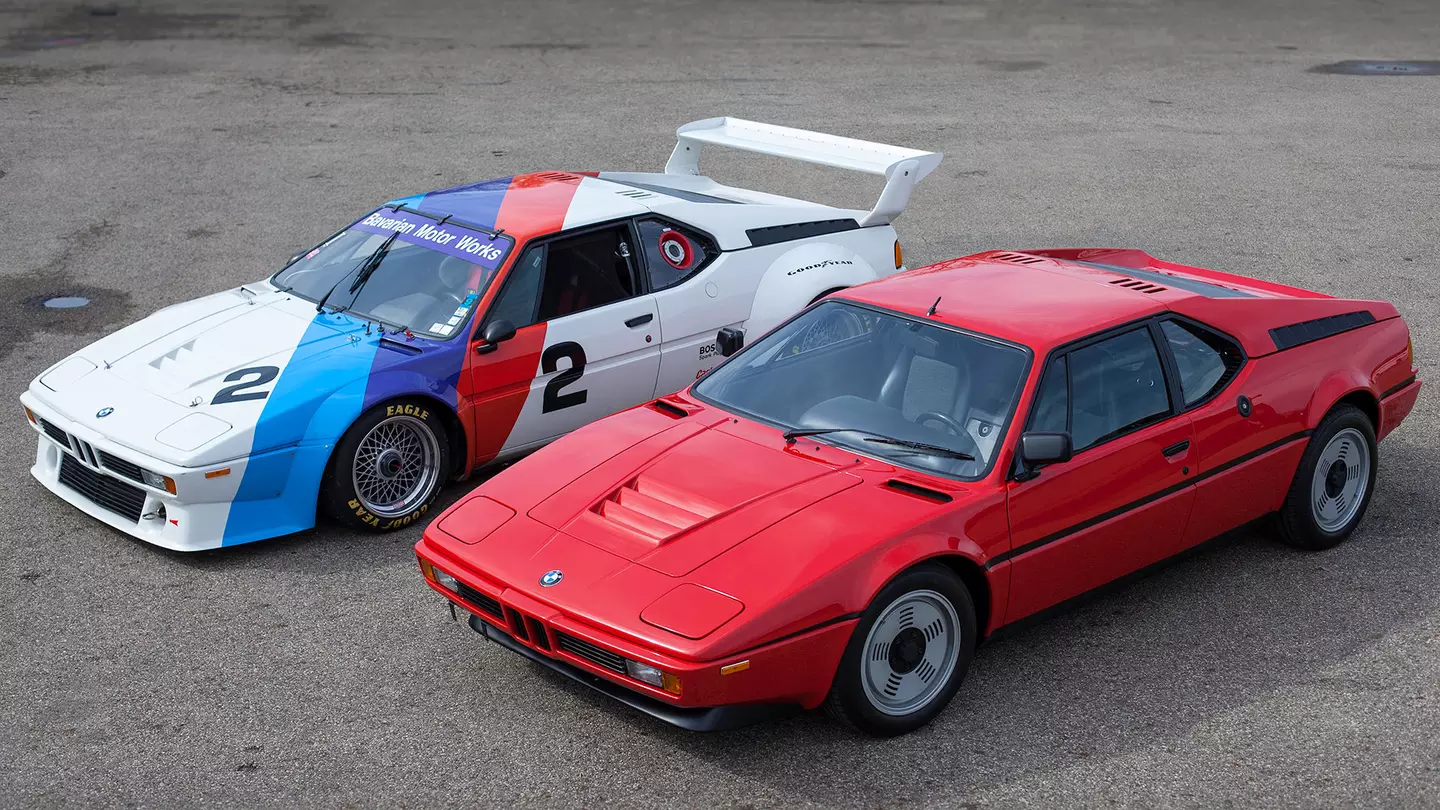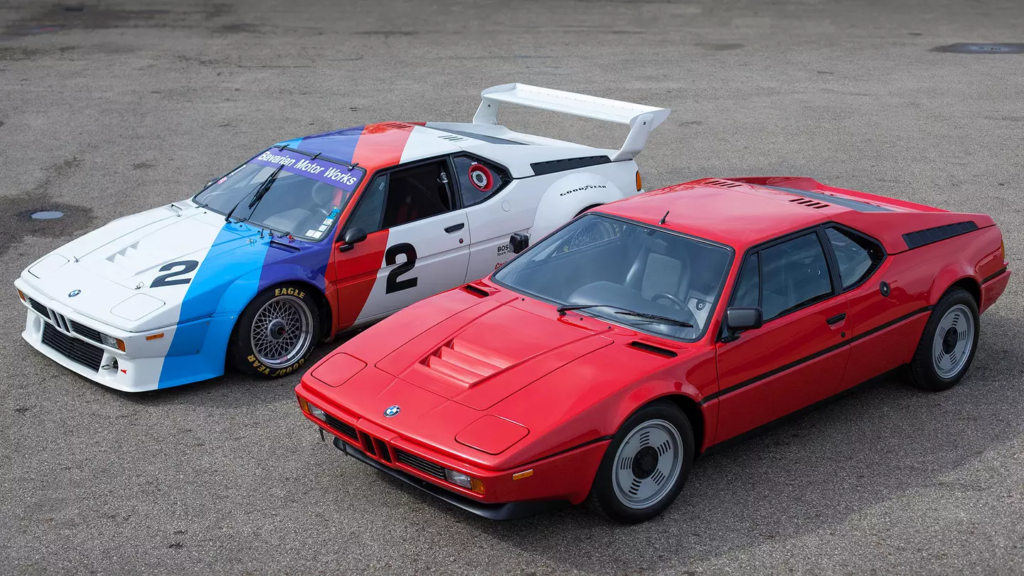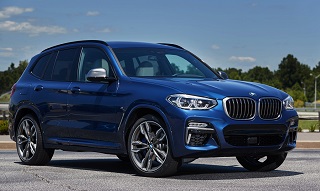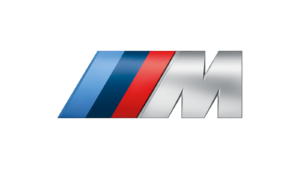The X3 is about as far away from the concept behind the ///M badge as possible, becoming nothing more than a marketing gimmick that appeals to the car buyer who wants to look sporty but has no clue about performance.
The BMW ///M badge was originally the moniker for BMW’s skunkworks, a group of rouge engineers whose focus was on racing and development. Their crowning jewel from the late ‘70s was the ///M1, a supercar in the early days of supercars when the only other players were Italians who produced beautiful and woefully unreliable cars that were incredibly impractical but sleek and sexy. Ironically, the M1, unlike the other supercars, was normally aspirated and only powered by 6 cylinders instead of the accepted 8 or 12 cylinders of the Italians – yes, Lotus offered a 4-cylinder turbo in the Esprit but that was so unreliable that it even made a Lamborghini look like an endurance champion.
1978-1981 BMW M1 Procar (left) & Homologation Street Edition (right)
///M was also associated with the E28-based ///M535 and E24-based ///M635 – European variants of the 5-series sedan and 6-series coupe for America. These used the M1 engine albeit with a more common and tame fuel injection system (Bosch Motronic) which was significantly less troublesome than the Weber-Marelli system on the M1. Aside from the drivetrain, these Euro-only cars were the epitome of sleepers – slightly larger wheels and black-out chrome, and dual tipped exhaust were the only external cues aside from a small badge on the boot. Inside, the leather trim was upgraded but it wasn’t visually much different from the base models.
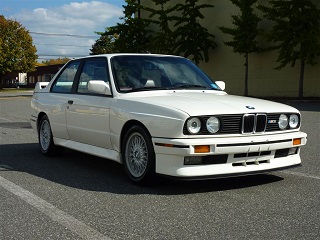
The E30-based ///M3 was a completely different story. Unlike the M535 and M635, the M3 was created to compete in the DTM (German Touring Car series). To meet the homologation requirements, BMW was required to offer these cars to the general public, in limited quantities. The motor was a 2.3 litre 4-cylinder, effectively the S38 (M1 motor) with 2 fewer cylinders. Fender flares were added as was a taller rear deck lid to improve aerodynamics. Unlike the bigger cars, the M3 was noticeably different from it’s more mundane cousins.

By the mid-’80s, BMW’s sales were starting to sag as their product line aged. Corporate marketing decided to throw their American fanatics a bone – offering an Americanized version of both the M535 and M635 as the ///M5 and ///M6 stateside. The promise was that the M5 in particular would be a limited edition with no more than 1200 examples produced. Like the European versions, these cars were the art of subtlety, looking virtually identical to the “base” model. For the US market, the M6 was available with more color options than the M5. And as a nod to enthusiasts, both cars were only available in a manual transmission. In the US, the M5 was only available in black with a tan interior – the Canadians received black cars but with black interiors.
Performance of the American M5 and M6 didn’t disappoint – granted the cars lost 30hp in the Federalization process (256 hp) but compared to the 171hp of the base 3.5 litre, the ///M cars were relative rockets. Add to that “gigantic brakes” that hauled the M5 down to zero ALMOST as fast as a VW Beetle, err 911 – the M5 had the distinction of being the 2nd fastest stopping car in America for 1988! Not bad for a 3500# barge with self-leveling rear suspension and seating for you and 4 of your closest friends.
Sadly, BMW’s focus changed in the early ‘90s. The E34-based ///M5 was still quite understated although it used wheels that were visually quite different from the pedestrian version, which made the car much more recognizable. Unfortunately, the ///M3 started transitioning away from a Skunkworks car and into a styling and marketing exercise in the E36. Compared to the base model, the E36-based ///M3 was certainly a step forward but now it used special ///M colors and ///M specific wing, ///M specific bumper covers and an ///M specific interior that was more than just nicer leather. While performance was better the the basic E36, the M3 started using more mainstream parts including a change to a single throttle body instead of individuals that were used on the E28 and E24 variants. The running joke at the time that upset many M3 owners was that “real” ///M cars had individual throttle bodies.
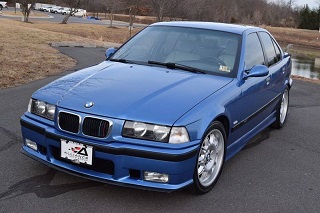
As the M3 aged, BMW further diluted it’s motorsports ties by adding slush-o-matic transmissions, 4-doors or a cabriolet option to the M3 – a car that had been conceived as a coupe. This certainly increased the car’s appeal as it now made the car available to families who needed a sedan AND so-called performance drivers who were unable to master the art of 3-pedals and only 2 feet. Performance was still better than the base models but the exclusivity of ///M cars was on the decline – appealing to the badge lovers rather than performance enthusiasts.
As the ///M brand has aged, BMW has put quite a bit of effort into producing performance cars that set the ///M cars well above the base models. However, they’ve lost the art of subtlety – newer ///M cars have super-aggressive and flashy bumper covers, chrome exhaust tips and sadly, ///M badged engine plastics that do nothing for performance BUT give young boys a certain tightness in their Underoos. It’s not that the new ///M cars are slugs, just that they’re now tools for tools – a precious few owners understand or are able to understand and use their ///M cars to their limits.
Back to this morning – the ///M badge, like the Audi R-Line or the Mercedes-Benz AMG badges are now more of a styling exercise. Even General Motors recognized this when they created an “SS” model of every vehicle in their line-up including the valued and performance oriented Malibu Maxx SS (look it up – fugly is a kind description). Granted the ///M badge has been available on the open market and applied to every car on the planet – perhaps my favorite being the uber-rare: 1988 BMW E30 ///M325es – a badge engineered car created by a poor teenager who couldn’t afford the M3 so he stole an ///M badge instead.
What makes the X3 ///M40i so special? A “huge” 4.0l V8**, big tyres, big brakes, an ///M bumper cover and the obligatory quad-tip chrome exhaust. Most likely it has ///M badges on the seats as well as the steering wheel to remind the owner why they paid a gigantic premium for “nothing special.” All that is well and good though because it allows BMW to sell more cars to suckers, er, well-heeled “prestige” customers. It’s just too bad that BMW’s ///M division sold out to the badge engineering crowd – I miss my days of driving a sleeper and being nothing more than an aged Asian man driving an equally aged black BMW sedan…
** [ Editors Note: after some fact checking, the M40i has a 3.0L turbo 6; and probably more M badges than horsepower 😉 ]


